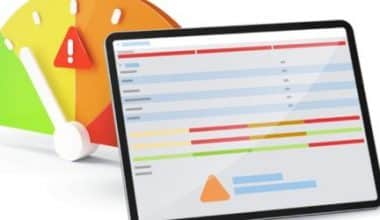In today’s marketing-heavy environment, product analytics is critical to ensuring that your product is as appealing as possible. To grasp what you can achieve with product analytics, you must first understand how it works. The tools provided by product analytics can then convert your product into a great success.
Product analytics software is being used by successful businesses to better understand how their present and potential customers engage with their products and services. This article will assist you in answering some of the most pressing product analytics questions.
What is Product Analytics?
Product analytics is a powerful set of tools that enables product managers and teams to evaluate the performance of the digital experiences they create. Product analytics provides vital data for optimizing performance, diagnosing problems, and correlating customer behavior with long-term value.
If you’re in charge of developing a terrific website or digital product, product analytics can tell you who’s using it… how… where… and when.
The tools provided by product analytics software allow you to see exactly what is going on in their goods. You may evaluate users’ digital experiences, optimize product utilization performance, detect issues with your customer experience, link consumer behavior with LTV, and more.
You’d like to discover which features your consumers use and which they disregard. Where users encounter difficulty. How to effectively reduce churn. And where you may personalize user interaction.
Why is Product Analytics Important?
Products are intricate! When building them, there are a million decisions to be made. But which of the ‘right’ options is the BEST?
Over a century ago, John Wanamaker stated, “Half of my marketing expenditure is wasted—the trouble is I don’t know which half.” Today, firms continue to gauge the efficacy of their software through assumption and guessing.
In terms of instinct and experience, data science provides a smarter, more accurate way to decision-making than guesswork or customer interviews. Analytics provide a superpower to product teams.
- See how well you’re serving user needs in real-time.
- Determine the precise success of particular aspects.
- Based on measurements that support business objectives, make product decisions.
- Improve your capacity to generate ideas and create user experiences.
Who Uses Product Analytics?
Every business can and should embrace the digital-first era. As a result of this move, all team members will benefit from better-knowing customers through product data. To create and disseminate these customer insights across the business, a wide range of industries, roles, and teams are adopting product analytics.
Use of Product Analytics in Industries
Product analytics can be used to generate insights into the customer experience in all industries using a digital platform. Product analytics have been used to help businesses expand in industries such as B2B, consumer technology, e-commerce, fintech, media, and others. Among the ways they use product analytics are:
- Identifying the most engaged consumers and using this knowledge to increase retention
- A/B testing of new features in order to make quick product decisions
- Identifying the retention hook that keeps consumers returning to an app
- Tracking users across the web and mobile in order to acquire a complete picture from the landing page to the checkout
- Offering appropriate products or services to users depending on their habits
- Using audience or readership to drive content decisions
- Personalized offers are created by combining customer insights with data from loyalty programs.
The possibilities are as diverse as the sectors that use product analytics.
Roles That Utilize Product Analytics
Data insights do not belong to a single group. Everyone, from the C-suite to product managers to marketers, may benefit from real-time consumer insights. Product analytics are commonly used in the following roles:
- Products Managers
- Marketers
- Engineers
- Analysts
- Researchers and UX/UI Designers
- Data Scientists
- CEOs and Executive Management
- Operations Leaders
- Customer Success Managers
- Sales Executives
To uncover and discuss findings that affect the customer journey, all team members must collaborate. Whether you want to understand current customer behavior or predict what will happen next, the solution is in your product analytics.
The most significant role is that of your customers. They benefit from what you learn because they are the source of your data. Your product analytics may offer you the precise data you require to guide your decisions and continue to create enhancements that satisfy your customers.
Product Categories that Make Use of Product Analytics
Product analytics is useful for a wide range of products, including web apps, mobile apps, websites, and IoT (Internet of Things) or smart hardware. It is frequently used by businesses to examine the performance of several digital goods or channels. After all, a customer’s journey does not begin and stop with a single device. Customers may begin on the web and then go to mobile, and you must understand how they interact with your company in each digital environment.
Metrics Used In Product Analytics
There’s no reason to collect and analyze every piece of data you can find. Doing so just adds to the strain on your analytics team to make sense of it all.
Instead, choose the metrics that are important to you. Save time and effort by limiting your search based on your objectives. If you’re not sure where to begin, these are some of the most important metrics that a product analyst considers.
- Engagement: Consider the engagement measure to be a map of the customer journey. You collect information about how customers found you, what they did before signing up, which features they used the most (and least), and what keeps them coming back. This data enables you to fine-tune your product in order to improve the client journey for as many new consumers as possible.
- Customer Churn: Tracking customer churn will tell you when a customer chose to cease using your product.
- Retention: With this metric, you can observe how many customers return, when they return, and how many times they return. You can observe what those high-retention consumers do and then make those things more accessible to others.
- Cost of new customers: Examining this measure will reveal how much money you spend before a visitor becomes a customer. You can track if this number rises or falls by modifying your product.
- Customer lifetime value is more than just the amount of money your customers spend on your product. Tracking this allows you to study the habits of your most valued clients and try to persuade others to follow suit.
Product Analytics Analysis You Can Perform
Keep your end goals in mind when shopping for a product analytics solution. You want to know what activities customers take within the product, what they have in common, and how you can use this knowledge to improve the customer experience.
#1. Cohort Analysis
Cohort analysis is a type of analysis that allows you to divide your users into groups based on shared features. You can, for example, categorize your users based on actions they have made after signing up or distinct behaviors displayed during a given time range. From there, you may begin to determine which clients are valuable and which may require nudges to become valuable.
#2. Churn Analysis
While other tools can demonstrate that your churn rate is high, product analytics can assist you in determining how to reduce it. A churn study indicates how many consumers continue to use or abandon your product. Whether customers abandon your product soon after starting to use it or gradually disengage, churn analysis will help you identify which stages of the customer experience are most affected by churn.
#3. Retention Analysis
A retention analysis will help you discover how many of your consumers return to your product over time: on the first day, the second day, and weeks or months later. You may also use your cohorts to do a retention study to see which actions lead to total product retention. This information can be used to design retention strategies and improve retention marketing efforts.
#4. Funnel Analysis
You can find new potential for improvement and growth if you can view and measure how your users go through a sequence of processes. Conversion may be improved by analyzing funnels. You may discover that users abandon your onboarding experience, or that buyers do not complete checkout after adding products to their carts.
#5. Conversion Analysis
A conversion analysis allows you to compare users who complete all stages of your funnel within a “conversion window” versus consumers who do not convert. A conversion analysis delves into the specifics of your funnel to elicit information about what your converted clients have in common.
The Conversion Drivers feature in Amplitude takes conversion analysis to the next level by analyzing all in-product events that occur between a starting point and a successful endpoint and determining which of those in-between steps are most connected with conversion or drop-off. In this manner, you can identify which behaviors tend to drive success at each point of the funnel.
#6. Milestones Analysis
Customers fall in love with your product when they have an “aha moment,” at which point they become more involved and are more likely to become repeat customers. You may already be aware of your product’s milestones and only need to check your assumptions, or you may need to dig further into your product data to discover the consumer milestones. You may utilize milestone analysis to find the actions that your high-value customers perform and encourage more people to complete the same steps.
#7. Customer Experience Analysis
The customer journey is followed by the customer experience, however, the path is rarely linear. From your first marketing efforts to continuing retention and brand loyalty, you must consider all touchpoints.
Customers are more likely to respond if your efforts are tailored at every stage. You can use A/B testing to urge other consumers to do the same by knowing what personalization methods drive customers to execute specific high-value activities within your product.
#8. Personalize the Marketing Experience
Customers nowadays expect personalized experiences across all digital channels. Using behavioral data, you can create tailored experiences at scale. You may use segmentation to locate your greatest consumers, automate the optimal message for different cohorts, and track the performance of your advertisements, emails, in-app experiences, and more.
You may not only streamline your personalization efforts but also reliably measure the impact of your product or campaign with a unified solution for analytics and marketing personalization.
Steps Product Analytics Success
Product analytics success is emphasized by companies that prioritize team-wide adoption. Making product analytics available to everyone allows teams to move more quickly and make more informed product decisions.
You may set the groundwork for success with your product analytics platform by following the advice below.
#1. Encourage Inter-Functional Collaboration
When you bring together people with diverse areas of expertise for a project, your team can stay focused on the overall aim. This cross-functional collaboration enables each team member to contextualize data discoveries. Giving all users access to product analytics is the simplest way to accomplish this.
Consider ways to enable all teams to make decisions based on data as you get started. Your technical staff may be working hard to make the product scalable. The C-suite wishes to forecast revenue. The marketing team wishes to reduce the average amount of time it takes a consumer to convert. You want your teams to embrace the collaboration provided by product analytics.
#2. Set Data Management as a top priority.
Effective data management methods are required when connecting your data to a product analytics platform. It’s vital that your data stays usable and doesn’t become cumbersome. Your data management framework should comprise the following components:
- Determining what data will be collected for your product analytics and how it will be kept accurate and reliable
- Keeping your product analytics data organized, clean, and free of data silos
- Assuring data accessibility so that each team’s demands are addressed inside product analytics
#3. Plan Your Instrumentation for Product Analytics
Product analytics instrumentation is the process of configuring your data sources and determining what to track in your product. These decisions should not be made in silos but should involve personnel from several departments who have subject knowledge. Your instrumentation team should make certain that the demands of all teams are met.
Your instrumentation procedure may comprise the following team members:
- Collecting questions that each team wants to be answered
- Choosing certain KPIs and indicators to track
- Beginning with a workflow about which they want to understand more
- Making a goal or target that they want to achieve
- Creating a prototype for future testing
Answering the most critical business question should be the first step in instrumentation. Team members can then use your product analytics solution to identify an answer. Then, your instrumentation team should be able to experiment with and apply product analytics to new use cases. It is important to note that instrumentation will require some upfront technical work, but this investment will allow your team to study clear and relevant data for many years to come.
#4. Implement Good Data Governance
Data democracy entails all teams having access to product analytics and being able to rely on the results. Data governors, who set the criteria for how the data will be used and educate the team, are responsible for maintaining this access. This position is typically found in the data science team, where it collaborates closely with both engineers and product managers.
Your data governors will own the data taxonomy and become the go-to experts for tracking questions. They are also in charge of keeping the standards up to date with any changes that occur in the data over time.
#5. Allow Integrations to connect multiple products.
While your major source of data is your product, you may have data stored on other platforms. Integrate your product analytics platform with well-known tools to mix various data types and get a comprehensive view of your customers.
- Salesforce CRM connection allows for account analysis and the creation of group-level properties.
- Zendesk connection allows your company to share all user data for complete tracking.
- The Amazon Redshift integration enables ad hoc queries without the need for ETL processes.
- MParticle integration can keep track of events and users throughout the customer’s lifetime.
- Facebook Ads integration and behavioral data created custom audiences
- Intercom integration can target customers with customized campaigns and messages.
#6. Learn From Success Stories
Even after following these steps, you may be left wondering how to best utilize product analytics inside your organization. Case studies are an excellent way to discover how other companies use product analytics to grow their digital goods.
- HubSpot employed a hybrid build-and-buy product analytics method to better analyze user behavior and create amazing digital solutions.
- UnderArmour relies on product analytics for segmentation, funnels, and more within their renowned workout apps,
- Instacart employed product analytics to enhance checkout completions,
- GoFundMe performed product testing with A/B tests in order to enhance donations.
- Slate effectively launched a paywall business using data.
Product Analytics Tools
The following are the finest product analytics tools on the market, according to our study, as indicated by their average Capterra and G2 reviews. It should be noted that these premium tools frequently have a bespoke price strategy based on usage volume. The prices for these tools are shown below, however, keep in mind that they may change.
#1. UXCam
UXCam is a popular mobile app product analytics solution that is created exclusively for use with mobile apps.
It is a well-liked solution in the market, with a rating of 4.7 out of 5 based on 133 reviews. All mobile app frameworks, including iOS, Android, React Native, Flutter, Xamarin, Unity, NativeScript, and Cordova, are supported by the platform.
UXCam’s auto-capture technology is one of its notable features, as it automatically stores all user gestures within the app as data points that can be evaluated afterward. This eliminates the requirement for manual event configuration and enables retrospective data analysis.
f you have a mobile app and want to improve user experience and conversion rates, UXCam could be a suitable fit. It provides both quantitative and qualitative analytics and can be readily incorporated in less than 5 minutes with just two lines of code.
However, if you’re looking for a product analytics tool for web apps, an A/B testing tool, or a tool to assess marketing efforts, UXCam might not be the ideal choice.
UXCam provides a free plan as well as a free trial.
#2. Mixpanel
Mixpanel has a rating of 4.4 out of 5 based on 84 reviews from customers.
Its pricing begins at $36 per month, albeit this option includes just restricted features and sessions. Mixpanel’s user history, predictive analytics, and bespoke dashboards are some of its standout features.
#3. Adobe Analytics
Adobe Analytics is a popular product analytics solution, with 4.4 out of 5 ratings based on 167 user ratings.
While the corporation does not reveal pricing information publicly, it has been rumored that it begins at $100,000. Custom analysis and visualization, a clear interface, and extensive segmentation capabilities are some of Adobe Analytics’ key features.
#4. Gainsight PX
Gainsight PX is a product analytics tool with a single review and a rating of 4 out of 5.
The price of the instrument is not disclosed by the manufacturer. Gainsight PX’s primary features include the ability to track user activity with and without custom events, a product guide, and the ability to collect user feedback.
#5. Amplitude
Amplitude is a product analytics solution with a 4.4 out of 5-star rating based on 39 reviews.
They offer a free plan for up to 10 million monthly events, according to GetApp. A business package with more sophisticated capabilities starts at $995 per month, with enterprise rates available upon request. Custom dashboards, user profiles, and a real-time event stream are just a few of Amplitude’s important features.
How To Use Product Analytics Tools
Here’s how to make the most of a product analytics tool:
- Connect the tool to your product: Integrate the tool with your mobile app or website, ensuring that all relevant data is collected.
- Define important metrics: Determine which metrics, such as user engagement, conversion rates, or customer satisfaction, you want to track.
- Configure tracking and event tracking: Set up the tool to track the metrics and events you’ve specified.
- Analyze data: Log in to the program and begin studying the data, searching for trends and patterns in user activity.
- Visualize data: Use graphs, charts, and other visual aids to convey facts in a clear and relevant manner.
- Identify Insights: Look for insights into user behavior and form conclusions about what encourages engagement and conversion.
- Share results: Results should be shared with stakeholders, including product and marketing teams, in order to inform product development and marketing strategies.
- Take action: Based on your findings, make adjustments to your product or introduce new tactics to improve the user experience and achieve your goals.
A product analytics tool’s industry-standard functionality is to capture events and user journeys. Regardless of which tool you use, the dashboard should display meaningful insights.
Advanced product analytics systems instantly collect all user interactions without the need for event setup. These tools employ the increased data depth to generate heatmaps or session replays, as well as to perform retrospective analysis.
Types of Product Analytics Software Categories
Different types of tools are available for product analytics. Some only provide analytics, whereas others additionally provide related toolkits, such as those for collecting client feedback.
Additionally, there is a distinction between qualitative and quantitative product analytics tools. Qualitative analytics tools are concerned with user behavior, whereas quantitative analytics tools are concerned with numerical data.
Because the technology utilized for web and mobile goods differs, it makes sense to have separate tools for each. A product analytics solution that is one-size-fits-all is likely to be lacking in features or capabilities. You want to be specific and use specialist tools.
You might also attempt to create your own in-house product analytics solution. This entails additional development costs as well as a certain level of risk. We recommend conducting a cost-benefit analysis in this case.
Product Analytics Compared to Other Solutions
There are numerous solutions available that attempt to address concerns about engagement, product utilization, and other topics. Other solutions, on the other hand, have holes that only product analytics can cover.
- Mobile and web analytics (such as Google Analytics) are designed to analyze marketing expenditures such as SEO and page metrics. By incorporating behavioral data, richer data investigation, and increased flexibility to act on insights straight from the platform, product analytics expands.
- Although business intelligence (BI) tools can provide insights and trends, they typically have a steep learning curve. BI tools are best suited for strategy guidance rather than tactical, actionable product information.
- Data management platforms acquire, store, and organize data. However, they frequently fail to do granular user analysis. They also necessitate significant query-writing abilities, restricting the ability to democratize data.
Teams that combine these tools with a product analytics platform get the best of both worlds. They each serve a specific role, but product analytics fills the need left by the other solutions.
- CUSTOMER RETENTION STRATEGIES: Meaning and Effective Strategies for Customer Retention
- EMPLOYEE RETENTION RATE: How to Calculate It and Things You Must Know
- EMPLOYMENT RETENTION: Definition, Strategies, Tax Credits, and Rates
- LEAD CONVERSION: Examples and Rates
- WHAT IS CASH CONVERSION CYCLE: How to Boost and Calculate CCC





